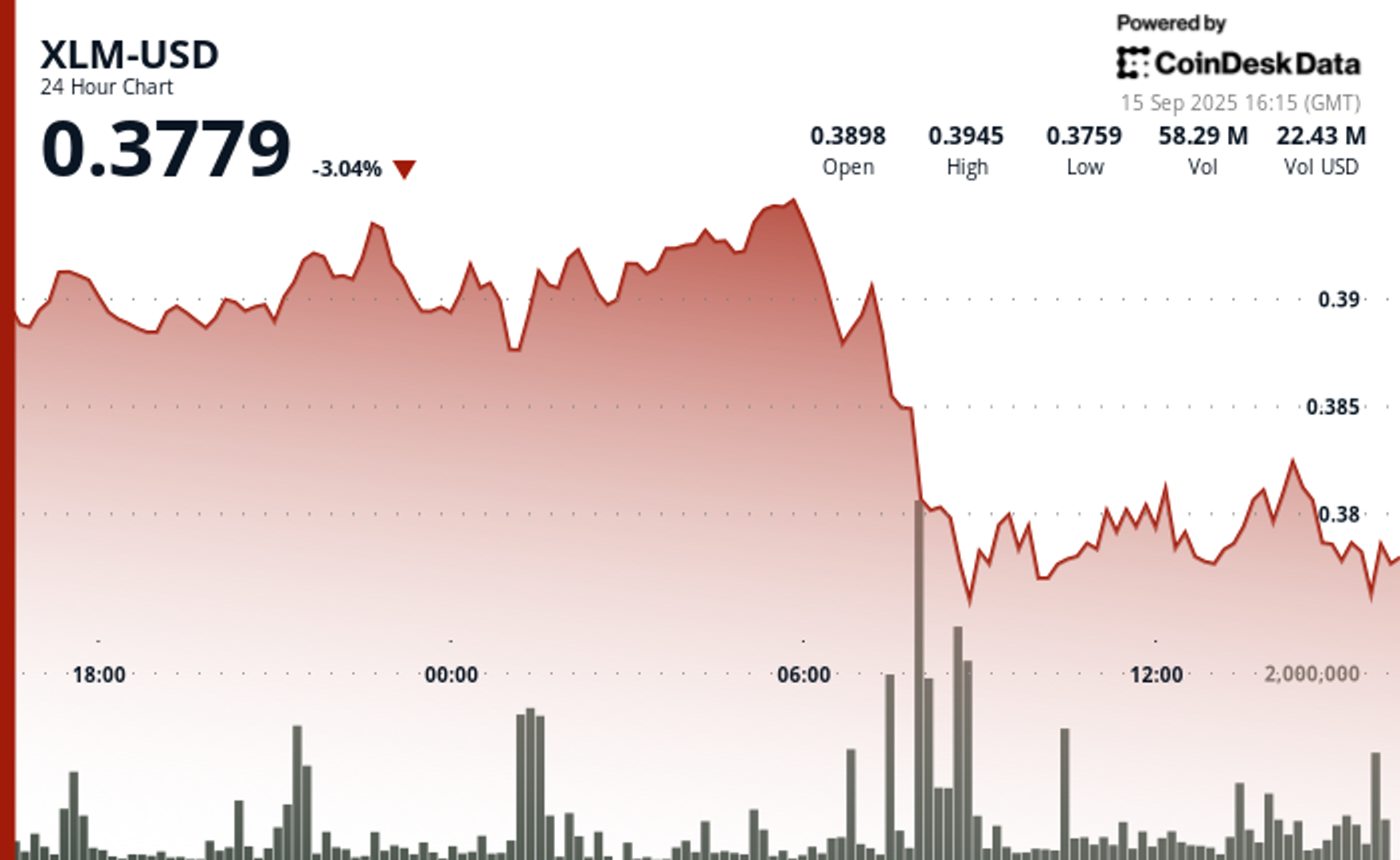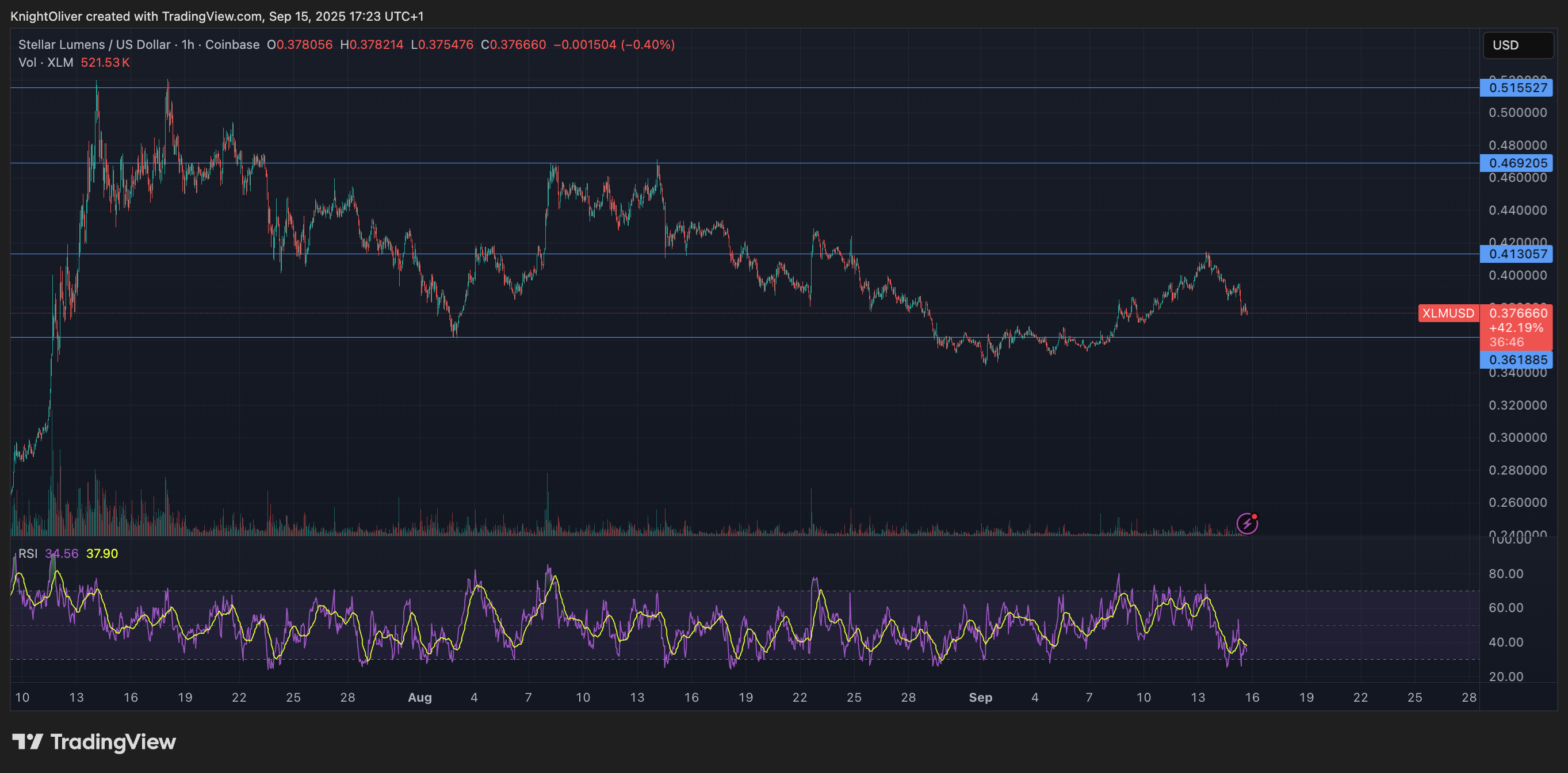Uncategorized
Unlocking Private Credit’s Potential: How Tokenization Brings DeFi Innovation to Traditional Finance

Could the crypto revolution’s legacy extend beyond democratizing money? Today, it’s paving the way to reinvent private credit. Envision a future where lending to mid-sized businesses or financing infrastructure projects mirrors the efficiency and openness of a decentralized exchange. That’s the aim of tokenization, a blockchain-powered innovation breaking down decades-old barriers in a $1.7 trillion (and growing) private credit market.
Private credit 101: the invisible engine of global finance
Private credit is an integral element of non-bank lending in which institutional players like hedge funds, private equity firms and specialized lenders provide loans directly to businesses. These aren’t your typical bank loans — think bespoke financing for startups, real estate developments or corporate expansions, often offering higher yields than public bonds, averaging 8-12% vs. 4-6% for corporate debt. But here’s the catch: this potentially lucrative market has long been gated by TradFi’s legacy systems.
You’re reading Crypto Long & Short, our weekly newsletter featuring insights, news and analysis for the professional investor. Sign up here to get it in your inbox every Wednesday.
Why crypto natives should care
If you’re familiar with DeFi’s ethos — permissionless access, composable assets and real-time settlements — you’ll instantly recognize private credit’s pain points:
Locked-up capital: Investments are often trapped for 5+ years with no secondary market. (Imagine an NFT you can’t sell until 2029.)
High barriers to entry: Minimum investments start at six figures, shutting out retail and smaller institutions.
Analog inefficiency: Manual underwriting, paper-based contracts and monthly — not real-time — performance updates.
Black box risk: Pricing and creditworthiness assessments lack the transparency that crypto markets demand.
Tokenization flips this script. By converting loans into blockchain-based digital tokens, it injects DeFi’s superpowers — liquidity pools, fractional ownership, smart contract automation — into a market starving for innovation. Suddenly, private credit can operate with the efficiency of a stablecoin transaction, the transparency of an on-chain ledger and the accessibility of a crypto exchange.
Tokenization 2.0: rewiring private credit’s DNA with blockchain
We believe that bringing private credit on-chain isn’t just a technical upgrade — it could be a fundamental shift in how lending markets function.
1. Fractional ownership: breaking the barriers to entry
Tokenization shatters private credit’s exclusivity by slicing loans into bite-sized digital tokens, democratizing access to yields once reserved for private equity whales.
Wider accessibility: Platforms can offer private credit exposure in smaller denominations, mirroring how crypto exchanges fractionalized bitcoin.
Global investor pools: A developer in Nairobi or a DAO treasury in Denver now has the potential ability to finance a solar farm in Spain, with no intermediaries and no borders.
New yield strategies: Composability lets investors mix tokenized loans with DeFi primitives (e.g., using private credit tokens as collateral for stablecoin loans).
2. Liquidity unleashed: from locked vaults to 24/7 markets
Private credit’s illiquidity has always been a trade-off for higher returns. Tokenization rewrites the rules by creating programmable secondary markets. Imagine a marketplace where tokenized loans trade peer-to-peer, with pricing reflecting real-time risk data. Smart contracts could automate liquidity reserves, letting investors exit positions early by tapping into pooled capital. And on-chain activity — like a borrower’s revenue milestones or loan repayments — could auto-adjust token values, killing TradFi’s stale monthly NAV updates. No more waiting for a quarterly fund window to exit, since the market never sleeps.
3. Instant settlements and lower costs
TradFi settlement can drag for days, riddled with custodians, agents and banks each taking cuts. Tokenization would be able to clear transactions in seconds. Here’s how:
Atomic transactions: Loan funding, interest payments and secondary trades settle instantly via smart contracts. No more «wire confirmation delays.»
Costs slashed: Cutting out intermediaries such as lawyers and transfer agents could reduce fees, passing savings on to both borrowers and investors.
Cross-chain synergy: A loan tokenized on Ethereum could be used as collateral on Solana, bridging private credit with DeFi liquidity rails.
It’s the TradFi→CeFi→DeFi pipeline, accelerated.
Challenges and additional risks introduced by tokenizing private credit
Tokenizing private credit streamlines funding and unlocks new liquidity pathways, but it also introduces complex challenges that must be addressed before the market can scale.
Regulatory uncertainty. Compliance remains a moving target. While jurisdictions are shaping digital securities laws, legal enforcement of tokenized credit agreements is still evolving. Institutions must navigate securities classifications, investor protections and AML requirements — all without a standardized global framework.
Smart contract and cybersecurity risks. Transparency doesn’t equal security. Bugs, governance flaws and cyberattacks can all lead to capital losses. Unlike traditional credit markets, smart contracts operate without centralized dispute resolution, making risk mitigation strategies like contract audits, insurance and fallback mechanisms critical.
Liquidity fragmentation. More platforms are issuing tokenized private credit, but without standardization, liquidity remains siloed. Secondary market depth depends on consistent credit risk assessments, uniform token structures, and legally enforceable transferability — all of which remain work in progress.
Valuation and credit risk complexity. Tokenization doesn’t erase borrower credit risk — it just moves it on-chain. While real-time financial data and automated risk models improve transparency, fundamental underwriting, default management, and legal enforceability still require off-chain verification. Pricing tokenized private credit relies on a hybrid approach, blending traditional credit models with blockchain-based risk signals.
Operational challenges. Early issuers of tokenized private credit have faced high costs replicating legal agreements on-chain, limiting initial efficiency gains. Meanwhile, DeFi-based private lending markets have encountered problem loans in emerging economies, proving that tokenization can’t fix credit risk — it only changes how it’s structured and monitored.
Interoperability issues. The challenge isn’t just blockchain compatibility; it’s aligning legal structures, credit risk methodologies and secondary market infrastructure across different ecosystems. For example, a tokenized credit instrument on Ethereum may not be legally equivalent to one on Avalanche, limiting cross-platform liquidity. Without credit risk standardization and regulatory harmonization, true scalability remains elusive.
Despite these hurdles, tokenized private credit is gaining momentum. As compliance frameworks solidify, credit models improve and institutions enter the space, the market is inching closer to institutional-scale adoption. However, risk management will define its trajectory.
Future outlook: the road ahead for tokenized private credit
We believe the next decade won’t just evolve private credit — it will redefine it. Tokenization is merging TradFi’s institutional strength with DeFi’s agility, creating a financial ecosystem where loans function as programmable assets and liquidity moves seamlessly across markets.
Key trends to watch
Stablecoins as settlement rails. With $1.5 trillion in monthly volume, stablecoins are emerging as the default cash settlement layer for tokenized lending. Instant, frictionless transfers eliminate settlement delays and reduce counterparty risk.
Multichain credit markets. While Ethereum currently hosts 89% of tokenized assets, Solana, Avalanche and Polygon are rapidly gaining traction, paving the way for loans that move across chains as fluidly as do digital transactions.
AI-powered risk assessment. On-chain data is fueling AI-driven models to build dynamic, privacy-preserving credit scores. By continuously adjusting risk models based on borrower activity, tokenized lending markets can offer smarter underwriting, instant assessments, and lower default risks, all without compromising privacy.
Tokenized private credit isn’t just another asset class — it has the potential to become the operating system for a global capital market. As regulatory clarity improves, infrastructure matures and TradFi deepens its involvement, expect an explosion of new products, enabling borderless syndication, dynamic risk pricing and compliance mechanisms embedded directly into token structures.
Uncategorized
Asia Morning Briefing: Fragility or Back on Track? BTC Holds the Line at $115K

Good Morning, Asia. Here’s what’s making news in the markets:
Welcome to Asia Morning Briefing, a daily summary of top stories during U.S. hours and an overview of market moves and analysis. For a detailed overview of U.S. markets, see CoinDesk’s Crypto Daybook Americas.
Bitcoin (BTC) traded just above $115k in Asia Tuesday morning, slipping slightly after a strong start to the week.
The modest pullback followed a run of inflows into U.S. spot ETFs and lingering optimism that the Federal Reserve will cut rates next week. The moves left traders divided: is this recovery built on fragile foundations, or is crypto firmly back on track after last week’s CPI-driven jitters?
That debate is playing out across research desks. Glassnode’s weekly pulse emphasizes fragility. While ETF inflows surged nearly 200% last week and futures open interest jumped, the underlying spot market looks weak.
Buying conviction remains shallow, Glassnode writes, funding rates have softened, and profit-taking is on the rise with more than 92% of supply in profit.
Options traders have also scaled back downside hedges, pushing volatility spreads lower, which Glassnode warns leaves the market exposed if risk returns. The core message: ETFs and futures are supporting the rally, but without stronger spot flows, BTC remains vulnerable.
QCP takes the other side.
The Singapore-based desk says crypto is “back on track” after CPI confirmed tariff-led inflation without major surprises. They highlight five consecutive days of sizeable BTC ETF inflows, ETH’s biggest inflow in two weeks, and strength in XRP and SOL even after ETF delays.
Traders, they argue, are interpreting regulatory postponements as inevitability rather than rejection. With the Altcoin Season Index at a 90-day high, QCP sees BTC consolidation above $115k as the launchpad for rotation into higher-beta assets.
The divide underscores how Bitcoin’s current range near $115k–$116k is a battleground. Glassnode calls it fragile optimism; QCP calls it momentum. Which side is right may depend on whether ETF inflows keep offsetting profit-taking in the weeks ahead.

Market Movement
BTC: Bitcoin is consolidating near the $115,000 level as traders square positions ahead of expected U.S. Fed policy moves; institutional demand via spot Bitcoin ETFs is supporting upside
ETH: ETH is trading near $4500 in a key resistance band; gains are being helped by renewed institutional demand, tightening supply (exchange outflows), and positive technical setups.
Gold: Gold continues to hold near record highs, underpinned by expectations of Fed interest rate cuts, inflation risk, and investor demand for safe havens; gains tempered somewhat by profit‑taking and a firmer U.S. dollar
Nikkei 225: Japan’s Nikkei 225 topped 45,000 for the first time Monday, leading Asia-Pacific gains as upbeat U.S.-China trade talks and a TikTok divestment framework lifted sentiment.
S&P 500: The S&P 500 rose 0.5% to close above 6,600 for the first time on Monday as upbeat U.S.-China trade talks and anticipation of a Fed meeting lifted stocks.
Elsewhere in Crypto
Uncategorized
Wall Street Bank Citigroup Sees Ether Falling to $4,300 by Year-End

Wall Street giant Citigroup (C) has launched new ether (ETH) forecasts, calling for $4,300 by year-end, which would be a decline from the current $4,515.
That’s the base case though. The bank’s full assessment is wide enough to drive an army regiment through, with the bull case being $6,400 and the bear case $2,200.
The bank analysts said network activity remains the key driver of ether’s value, but much of the recent growth has been on layer-2s, where value “pass-through” to Ethereum’s base layer is unclear.
Citi assumes just 30% of layer-2 activity contributes to ether’s valuation, putting current prices above its activity-based model, likely due to strong inflows and excitement around tokenization and stablecoins.
A layer 1 network is the base layer, or the underlying infrastructure of a blockchain. Layer 2 refers to a set of off-chain systems or separate blockchains built on top of layer 1s.
Exchange-traded fund (ETF) flows, though smaller than bitcoin’s (BTC), have a bigger price impact per dollar, but Citi expects them to remain limited given ether’s smaller market cap and lower visibility with new investors.
Macro factors are seen adding only modest support. With equities already near the bank’s S&P 500 6,600 target, the analysts do not expect major upside from risk assets.
Read more: Ether Bigger Beneficiary of Digital Asset Treasuries Than Bitcoin or Solana: StanChart
Uncategorized
XLM Sees Heavy Volatility as Institutional Selling Weighs on Price

Stellar’s XLM token endured sharp swings over the past 24 hours, tumbling 3% as institutional selling pressure dominated order books. The asset declined from $0.39 to $0.38 between September 14 at 15:00 and September 15 at 14:00, with trading volumes peaking at 101.32 million—nearly triple its 24-hour average. The heaviest liquidation struck during the morning hours of September 15, when XLM collapsed from $0.395 to $0.376 within two hours, establishing $0.395 as firm resistance while tentative support formed near $0.375.
Despite the broader downtrend, intraday action highlighted moments of resilience. From 13:15 to 14:14 on September 15, XLM staged a brief recovery, jumping from $0.378 to a session high of $0.383 before closing the hour at $0.380. Trading volume surged above 10 million units during this window, with 3.45 million changing hands in a single minute as bulls attempted to push past resistance. While sellers capped momentum, the consolidation zone around $0.380–$0.381 now represents a potential support base.
Market dynamics suggest distribution patterns consistent with institutional profit-taking. The persistent supply overhead has reinforced resistance at $0.395, where repeated rally attempts have failed, while the emergence of support near $0.375 reflects opportunistic buying during liquidation waves. For traders, the $0.375–$0.395 band has become the key battleground that will define near-term direction.

Technical Indicators
- XLM retreated 3% from $0.39 to $0.38 during the previous 24-hours from 14 September 15:00 to 15 September 14:00.
- Trading volume peaked at 101.32 million during the 08:00 hour, nearly triple the 24-hour average of 24.47 million.
- Strong resistance established around $0.395 level during morning selloff.
- Key support emerged near $0.375 where buying interest materialized.
- Price range of $0.019 representing 5% volatility between peak and trough.
- Recovery attempts reached $0.383 by 13:00 before encountering selling pressure.
- Consolidation pattern formed around $0.380-$0.381 zone suggesting new support level.
Disclaimer: Parts of this article were generated with the assistance from AI tools and reviewed by our editorial team to ensure accuracy and adherence to our standards. For more information, see CoinDesk’s full AI Policy.
-

 Business11 месяцев ago
Business11 месяцев ago3 Ways to make your business presentation more relatable
-

 Fashion11 месяцев ago
Fashion11 месяцев agoAccording to Dior Couture, this taboo fashion accessory is back
-

 Entertainment11 месяцев ago
Entertainment11 месяцев ago10 Artists who retired from music and made a comeback
-

 Entertainment11 месяцев ago
Entertainment11 месяцев ago\’Better Call Saul\’ has been renewed for a fourth season
-

 Entertainment11 месяцев ago
Entertainment11 месяцев agoNew Season 8 Walking Dead trailer flashes forward in time
-

 Business11 месяцев ago
Business11 месяцев ago15 Habits that could be hurting your business relationships
-

 Entertainment11 месяцев ago
Entertainment11 месяцев agoMeet Superman\’s grandfather in new trailer for Krypton
-

 Entertainment11 месяцев ago
Entertainment11 месяцев agoDisney\’s live-action Aladdin finally finds its stars





